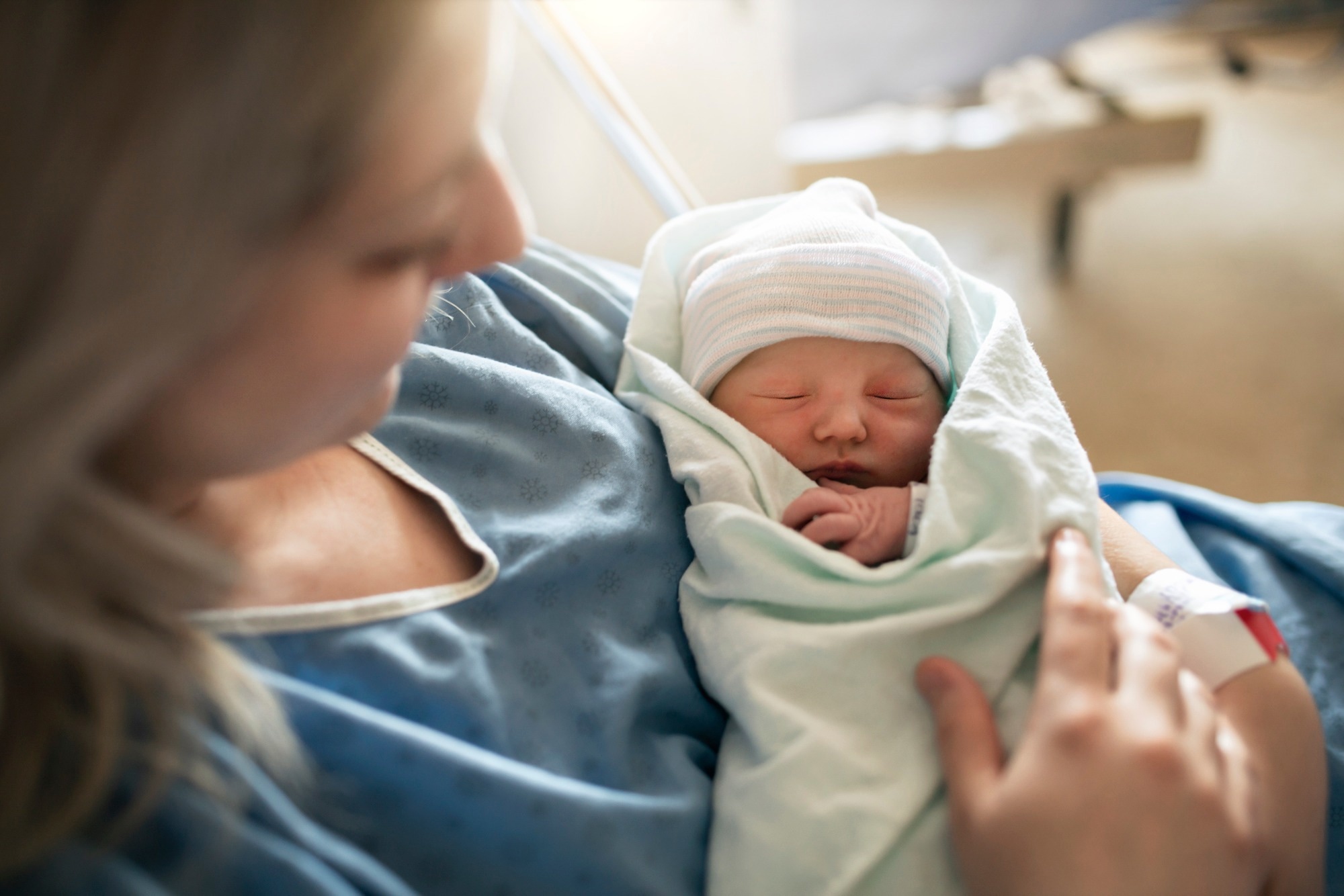Pre-term birth and low birth weight are the two most common causes of infant death. Many children below five years of age are vulnerable to acute lower respiratory infection (ALRI), which could manifest severe illness.
Household air pollution (HAP) is a leading factor responsible for reduced birth weight and high ALRI risk in children below the age of five years. HAP is caused by the inefficient burning of solid fuels in traditional cookstoves.

Study: Identifying sensitive windows of prenatal household air pollution on birth weight and infant pneumonia risk to inform future interventions. Image Credit: Lopolo / Shutterstock.com
Background
There remains a lack of studies that have determined the stove intervention type and timing of intervention, such as prenatal or early childhood, that could reduce the generation of HAP and alleviate its associated risks. Nevertheless, several studies have established a relationship between higher prenatal HAP exposure, higher pneumonia risk, and lower birth weight.
Thus, it is crucial to understand the time-varying associations and sensitive windows of HAP exposure that affect human health. There is a lack of evidence regarding the application of stove interventions in lowering HAP, which can improve birthweight in infants.
The Ghana Randomized Air Pollution and Health Study (GRAPHS) randomly assigned pregnant women to an improved efficiency biomass stove, a liquefied petroleum gas (LPG) stove, or a traditional open fire stove (control) to assess its effect on birth weight. Interestingly, none of the groups showed significant improvement in birth weight.
Another study conducted in Guatemala, known as the Randomized Exposure Study of Pollution Indoors and Respiratory Effects (RESPIRE), revealed that no difference in birth weight was observed between pregnant women subjected to a plancha-type stove with chimney ventilation or open fire for 12 months. Many other studies, including the multi-country Household Air Pollution Intervention Network (HAPIN) trial, reported similar findings.
Exposure-response analyses have consistently identified a relationship between higher air pollution and lower birth weight. At present, a limited amount of exposure-response data from HAP pregnancy cohorts is available.
The GRAPHS study revealed that for every one part per million (ppm) increase in average prenatal carbon monoxide (CO) exposure, a 39-gram lower birth weight and 14% elevated odds of low birth weight occurs. However, this study was not able to demonstrate whether an improvement in pneumonia risk was due to reduced HAP.
About the study
A recent Environment International study used the GRAPHS cohort with maternal repeated data on CO exposure during pregnancy to investigate temporal associations between prenatal HAP exposure and birth weight and pneumonia risks in infants during the first year of life.
Based on fetal development progresses across gestation, the current study hypothesized the existence of a potential window that influences future birth weight and pneumonia risk. Exposure to HAP within these sensitive windows may alter the structure and function of developing organ systems, both of which may significantly influence future disease risk.
The GRAPHS cohort included pregnant women in the Kintampo North Municipality and Kintampo South District of Ghana. The GRAPHS study is a cluster-randomized controlled cookstove intervention trial that included pregnant women who were the primary household cook.
Each study participant was at a gestational age of 24 weeks or less, had a singleton fetus, and was a non-smoker. At baseline, a total of 1,414 pregnant women were randomly assigned to an improved biomass stove, the LPG stove, or traditional, open-fire stove arms, the latter of which served as the control.
Study findings
The study cohort included 1,306 live births at over 28 weeks gestation. Among these, a total of 1,196 newborns had at least one valid prenatal CO measurement, pneumonia surveillance data, and birth weight data.
To this end, 25% of the children experienced at least one episode of physician-diagnosed pneumonia. Additionally, 9% of the cohort developed at least one episode of physician-diagnosed severe pneumonia.
The study findings strongly suggest the importance of prenatal HAP exposure on infant health. According to the identification of the sensitive windows of HAP exposure, prenatal CO exposure in early to mid-gestation was associated with lower birth weight, whereas prenatal CO exposure in later gestation was linked with an increased risk of severe pneumonia and pneumonia in females.
These findings emphasize the importance of using cleaner fuel cooking interventions in early pregnancy to improve the child's birth weight and reduce the risk of pneumonia. The timeframe of early to mid-gestation coincides with the second wave of endovascular trophoblastic invasion.
Based on the study findings, the cookstoves intervention was implemented too late to reflect any effect on birth weight and possibly severe pneumonia. Thus, it is crucial for women of childbearing age to strictly use cleaner stoves, which could ensure the use of cleaner stoves during pregnancy. In many regions, socioeconomic limitations could prevent the frequent purchase and use of clean cooking fuels.
Conclusions
Exposure to HAP during early to mid-gestation impairs the child's birth weight. Furthermore, mid- and late-gestation HAP exposure influences the manifestation of infant pneumonia.
The current study highlights the importance of prenatal HAP exposure during the in-utero period. Cleaner fuel cooking interventions during early pregnancy will help improve the newborn's birth weight and alleviate pneumonia risk.
Journal reference:
- Kaali, S., Jack, D. W., Mujtana, M. N., et al. (2023) Identifying sensitive windows of prenatal household air pollution on birth weight and infant pneumonia risk to inform future interventions. Environment International. doi:10.1016/j.envint.2023.108062